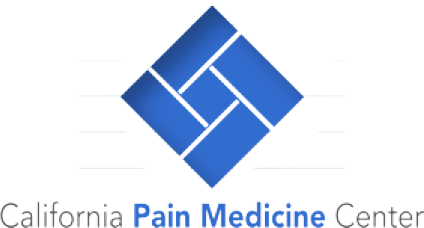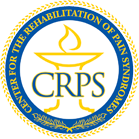Practice FAQ
California Pain Medicine CenterHow do you view interventional pain, medication management and complementary therapies?
The key is to have an interdisciplinary team that recognizes that interventional treatment must be carefully planned so that the right procedure is performed on the right patient at the right time. Improper treatment selection is doomed to failure. Similarly, prematurely implementing an interventional approach can also produce failure. The role of the interdisciplinary team is to work together to determine the appropriate treatment for the patient at the optimal time in a treatment algorithm.
Modern pain management utilizes high-technology interventional approaches complemented by a variety of behavioral and physical therapy techniques. The key to success is the communication among various disciplines to collaborate as the patient progresses, working to motivate the patient and ultimately produce functional rehabilitation. Each component is essential and collaboration is absolutely required.
What is your approach to pain management?
The field of pain medicine has evolved rapidly over the last two decades. Initially, the approach was merely to alleviate pain. However, this has evolved to goals that are far more significant. The ultimate goal is to restore function with alleviating pain as merely one component of a program designed to provide the patient with an opportunity to once again become a vital person. Restoring function can mean return to work, or for others, it may merely signify return of the abilities to perform activities of daily living. Certainly, pain management plays a role in comprehensive rehabilitation to enhance the ability of the program to achieve its goals. For patients with a history of chronic pain, they cannot participate in rehabilitation until the pain is reasonably controlled. However, merely controlling the pain, in a patient with a long history of chronic pain will not achieve the goal of restoring function.
For patients with chronic intractable pain, interventional pain therapy may be the essential ingredient that allows the patient to participate in meaningful rehabilitation. Often, without the benefit of interventional pain management, it is impossible to participate in treatment such as physical therapy, the key ingredient to comprehensive rehabilitation. Interventional therapies such as neuromodulation in our practice, facilitate rehabilitation that would be impossible without this form of treatment.
What is your full range of services?
We offer a full complement of pain management services in our Santa Monica facility in conjunction with rehabilitative care. For specialized care, we refer patients to subspecialty physicians at the nearby UCLA Medical Center.
Pain management services include precision spinal diagnostics and therapeutics including comprehensive history and physical examination, evaluation of radiological and neuromuscular physiology studies, then correlating all these elements.
Interventional procedures that are performed include transforaminal epidural injections, catheter guided procedures, facet joint injections, radiofrequency ablation of the nerves to the facet joints, neuroplasty, minimally invasive lumbar decompression, discography, intra-discal procedures, intercostal nerve blocks, lumbar sympathetic blocks, stellate ganglion blocks, celiac plexus blocks (both local anesthetic and neurolytic), ganglion impar blocks, hypogastric plexus blocks, and splanchnic plexus blocks. Protein enriched plasma (PRP) techniques are available but not emphasized. Ultrasound guided treatment of musculoskeletal problems are provided in office.
Neuromodulatory procedures include spinal cord stimulation, peripheral nerve stimulation, retrograde nerve root stimulation, and intrathecal therapy including catheter placement and implantation of pumps. Considerable research has been performed in the practice on these therapies. In addition, approximately one third of the neuromodulation procedures in our practice are repairs or revisions of systems implanted by others.
For the last eight years, we have been performing ketamine infusions to treat complex regional pain syndrome.
Our comprehensive interdisciplinary pain rehabilitation program incorporates a variety of disciplines in addition to the interventional pain treatment. Each program is custom designed for the specific patient at an interdisciplinary team meeting after members of the team have had the opportunity to evaluate the patient. The core of the program consists of physical therapy, biofeedback, and psychotherapy.
The physical therapies are multimodality physical therapy conducted by a group of Masters level or Doctoral level physical therapists each with an area of subspecialty. Often patients are shared by different physical therapy providers as patients progress through the treatment algorithm and require different specialties consistent with their progress. Areas of specialization include graded motor imagery, mirror box therapy, Alexander technique, Feldenchrist, Pilates, desensitization, hydrotherapy, cardiovascular training, and hardening. Modalities such as transcutaneous nerve stimulation (TENS), ultrasound, and iontophoresis are employed.
The strongest emphasis in biofeedback is neuro-biofeedback, that is, biofeedback guided by electroencephalography. Other methods of biofeedback include muscle tension biofeedback, temperature guided biofeedback, heart rate biofeedback, hydrosis guided biofeedback. Alpha Theta stimulation is employed. Various techniques are utilized at the beginning for evaluation including TOVA. Progression in brain rehabilitation can be quantitatively measured utilizing methods such as TOVA.
Psychotherapy is conducted by one of several PhD clinical psychologists. Patients see psychologists on an individual daily basis. Comprehensive evaluation is tailored to the presentation of the patient and usually includes several psychometric tests. Psychotherapy is eclectic, driven by the presentation of the patient and his or her needs. This can include insight driven therapy, cognitive behavioral therapy, among others, or a combination that may progress during the course of treatment. Our behavioral team includes psychologists with specific training in cognitive behavioral therapy. Credentials of our behavioral team members include three doctorates in clinical psychology, a Psy.D. in psychoanalysis, an advanced degree in clinical nutrition, and certification as a licensed Physician’s Assistant (PA). One psychologist has extensive experience in research psychology and two of our psychologists hold faculty positions at Universities including UCLA.
In addition to the core described above, other therapies incorporated include massage therapy, nutritional counseling by a nutritionist who also has a PhD in psychology, chemical dependency detoxification and treatment, chiropractic, hypnosis, restorative yoga, and occasional acupuncture. One important aspect of this multidisciplinary care is that each provider, regardless of their discipline, acts truly as a therapist working as a member of the team.
Our team has an ongoing active relationship with multifaceted residential chemical dependency programs and collaborate on an ongoing basis, including incorporating treatment either simultaneously or sequentially.
Book Appointment
Live Pain Free


Phone
(310) 264-7246
Hours
Mon - Fri: 8am - 5:00pm
Sat - Sun: Closed
Holiday Closed Dates
Address
2001 Santa Monica Blvd
Ste 1280-W
Santa Monica, CA 90404
